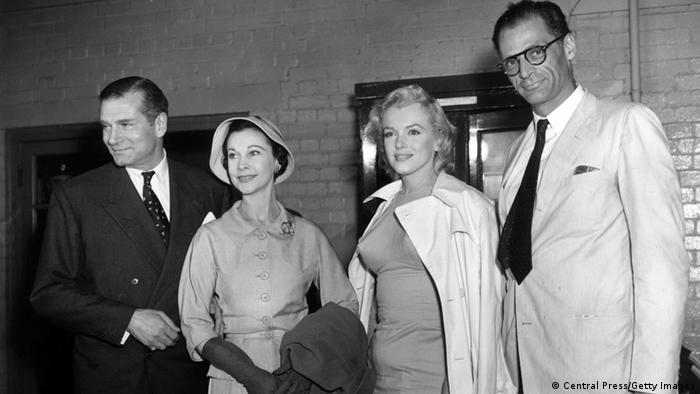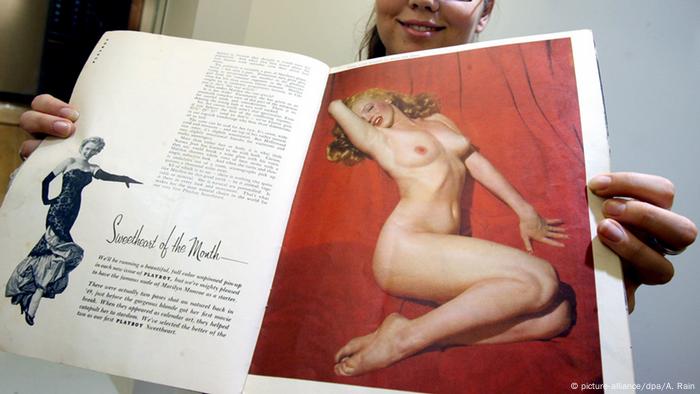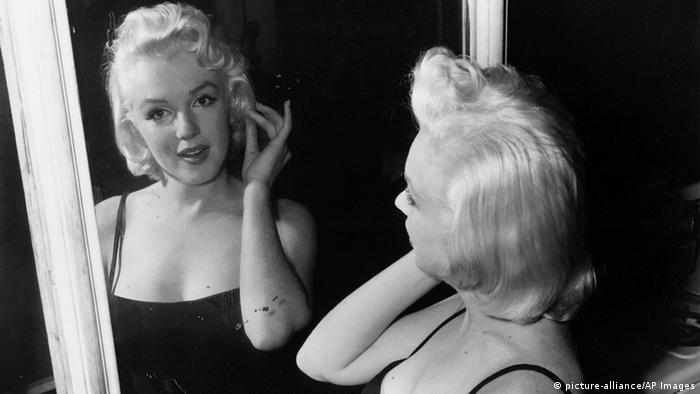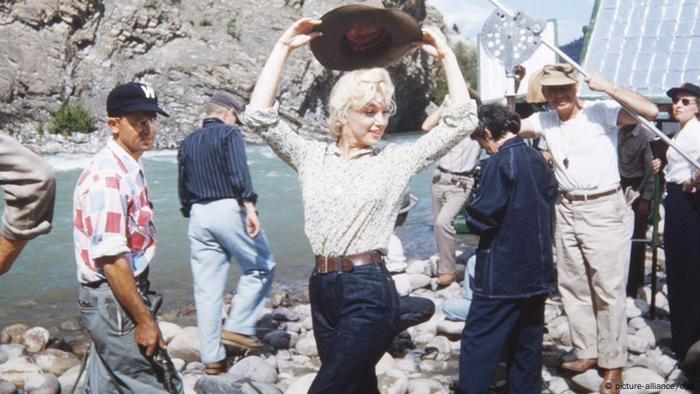She fought for self-determination and denounced sexual harassment in Hollywood decades before #MeToo. Marilyn Monroe died 60 years ago. Now a fictional film portrays her mysterious life.

Marilyn Monroe (1962) in her last film “Something's got to give”
Self-determined and “woke”. Such adjectives were not associated with the actress in 1950s Hollywood, when Marilyn Monroe was alive. But the American, who was portrayed more as a “blonde bombshell” or “sex symbol” than as a “pioneer” or even “feminist”, rebelled against some of the social conventions of her time. On August 5, 1962 she probably died of an overdose of sleeping pills.
A Netflix production about her eventful life is scheduled to premiere at the Venice Film Festival (August 31 to September 10). “Blonde” is scheduled to start streaming on September 28th.
With platinum blonde hair, the Cuban-born Ana de Armas embodies the screen star. Her accent is unmistakable in the trailer that Netflix has now posted online. Even before the film can be seen in its entirety, the actress received criticism online.
The Marilyn Monroe Estate's executors are defending Ana de Armas' casting as a Hollywood legend in 'Blonde.' “Any actor who steps into this role knows they have big shoes to fill. It looks like Ana was a great casting choice as she captures Marilyn's glamour, humanity and vulnerability.”
The trailer shows famous scenes from the film and the iconic moment when the star stands on a subway ventilation shaft with her white dress billowing. The cloakroom has also been faithfully reproduced. In the US, “Blonde” has received the highest age rating due to explicit scenes, so it can only be viewed by adults.
“Blonde” is not a biopic, but fiction
The fictional film portrait is based on a novel by Joyce Carol Oates and is intended to represent the rift between the private person Norma Jeane Baker (Monroe's real name) and the fictional character Marilyn. Andrew Dominik (“Killing Them Softly”) wrote the script and directed it. Also starring are Adrian Brody, who plays Marilyn Monroe's husband Arthur Miller.
With her mother struggling with mental health issues and her father's identity unknown, the girl, born Norma Jeane Mortenson, was raised in foster homes where she was sexually abused. Monroe's tumultuous personal life has been thoroughly dissected over the decades: sex objectification, failed marriages, miscarriages and abortions, drug abuse, and alleged liaisons with film studio bosses and the Kennedy brothers.

Actress Ana de Armas in a scene from “Blonde”
Professionally, her slinky looks, breathy voice – a strategy a speech therapist recommended to overcome her stutter – and her sexuality defined the roles she landed. They reduced her to a person who primarily catered to male fantasies. Today, however, it is viewed through a different lens: women simply did not have enough clout to dictate their terms in the 1950s. Monroe ended up being chosen as an icon by an unexpected quarter: feminists. Originally cited as an example of why feminism was necessary to counteract the sexual exploitation and objectification of women, Marilyn has since been recognized for breaking through and being ahead of her time.
Marilyn Monroe demanded A say
Long before Facebook CEO Sheryl Sandberg was urging women to get involved and claim their rightful place in the workplace, Monroe had been doing so decades earlier. Signed to Twentieth Century Fox, she was fed up with the “dumb blonde” roles and wanted more say in the scripts and roles she was cast for. “An actress isn't a machine,” she once told Life magazine writer Richard Meryman, “but they treat you like one.” That's why she founded Marilyn Monroe Productions in 1955 – making her the second woman in the United States after Mary Pickford to own her own production company. Pickford, dubbed “America's Sweetheart,” was a legendary silent film actress; she founded United Artists and was a founding member of the Academy of Motion Picture Arts and Sciences, which awards the Oscars. After much legal wrangling, Monroe and Fox settled on a deal in which she successfully negotiated back pay, a higher salary, and a say in scripts, directors, and cinematographers – a then-unheard of victory for an actress.
#MeToo activist: Monroe was ahead of her time
In “Wolves I Have Known,” an article she wrote for the January 1953 issue of Motion Picture and Television Magazine, Monroe denounced the sexual harassment then rampant in Hollywood. Of the men in the industry, the then 27-year-old wrote: “There are many kinds of wolves. Some are scary, some are just good-natured Charlies trying to get something for nothing, and still others make a game out of it.” Joan Collins, famous for her role as Alexis Carrington-Colby in the hit '80s TV soaps “Dynasty” and “Denver-Clan”, told British television in 2017 how Monroe once introduced her as a budding actress to America dangers of the job: “She said, 'Beware the wolves in Hollywood, sweetie. If they don't get what they want, they're going to terminate your contract.'”
An icon of the body positivity movement
Monroe was what fashion magazines are now calling “plus-size”. While critics and pundits still debate her actual dress size, there is no doubt that what we saw of her was in the age before the digital image processing was herself . The blatant display of her curves and open sexuality were once seen as the antithesis of feminism, but today Monroe is hailed by some as an icon of the body positivity movement: for having a positive, confident relationship with one's body.< /p>
Before she was discovered as an actress and model, she was in dire financial straits in the 1940s. Later, in 1952, as her popularity grew, nude photos surfaced from a calendar shoot for which she was reportedly paid a mere $50. Her bosses at Twentieth Century Fox told her to be in denial, but Monroe chose to face the truth instead. Speaking to United Press International reporter Aline Mosby, she explained that she was broke and needed the money. “Why deny it? You can get it anywhere. Besides, I'm not ashamed of it. I haven't done anything wrong.” It proved to be a PR coup for the actress and made her even more popular with her fans.
Monroe was woke
Her sharp mind and sound views of politics and social justice have often been sidelined. For example, she used her fame to get jazz singer Ella Fitzgerald to perform at a club that had previously declined to hire her. Mocambo Club management said the singer wasn't “glamorous enough” for the West Hollywood hotspot. However, Monroe urged club owner Charlie Morrison to book Fitzgerald in exchange for promising to attend every show in person and have a front row seat.
The jazz singer probably later recalled in her biography: “The owner said yes, and Marilyn was there, at the first table, every evening. The press was upside down. After that I never had to play in a small jazz club again. She was an unusual woman – a little ahead of her time. And she didn't know it.”
In the #MeToo and #BlackLivesMatter era, it is therefore fitting to emphasize just how much this star fought for self-determination and for Civil Rights occurred.
An “eternal shapeshifter”
As Lois Banner, USC professor of history and gender studies and Monroe biographer, wrote, Monroe continues to fascinate as an “eternal Shapeshifter” whose “multiple transformations allow each generation, even each individual, to create a Marilyn of their own liking”. And again, the cultural icon's ability to reflect on her time contributes to her enduring legend.
This is an updated version of a portrait from May 31, 2021.


 Marilyn Monroe – Myth and Muse
Marilyn Monroe – Myth and Muse Marilyn Monroe – Myth and Muse
Marilyn Monroe – Myth and Muse Marilyn Monroe – Myth and Muse
Marilyn Monroe – Myth and Muse Marilyn Monroe – Myth and Muse
Marilyn Monroe – Myth and Muse Marilyn Monroe – Myth and Muse
Marilyn Monroe – Myth and Muse Marilyn Monroe – Myth and Muse < h2>Charisma
Marilyn Monroe – Myth and Muse < h2>Charisma
 Marilyn Monroe – Myth and Muse
Marilyn Monroe – Myth and Muse Marilyn Monroe – Myth and Muse
Marilyn Monroe – Myth and Muse Marilyn Monroe – Myth and Muse < h2>Early Death
Marilyn Monroe – Myth and Muse < h2>Early Death